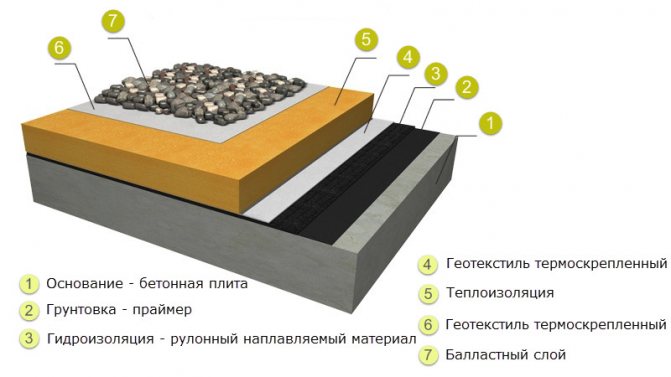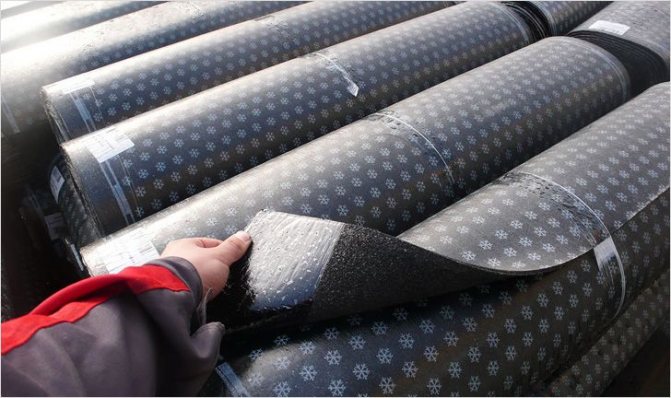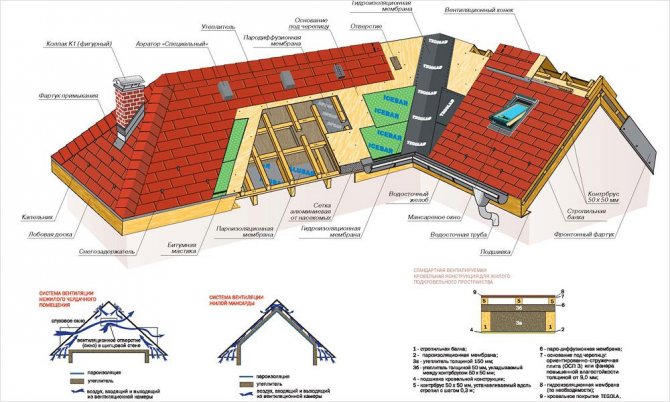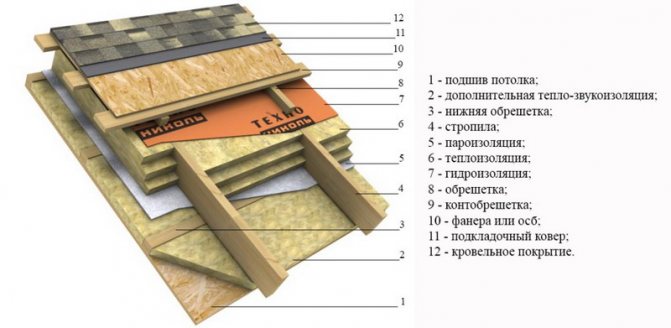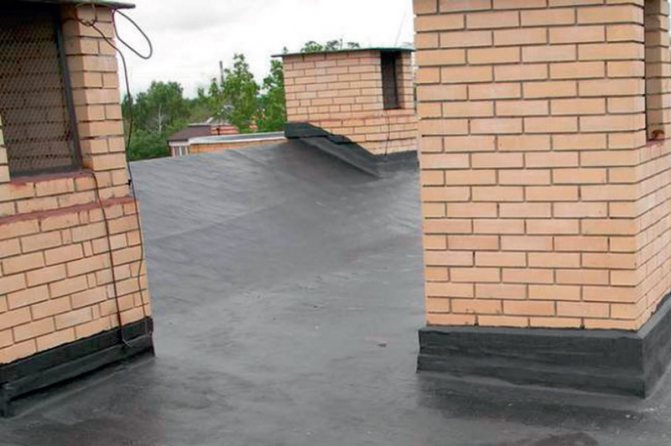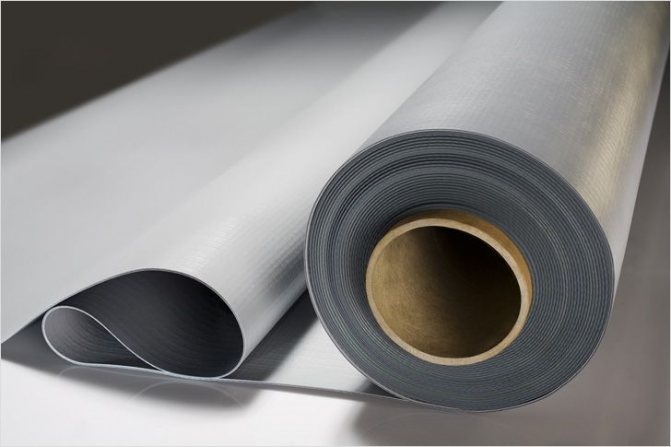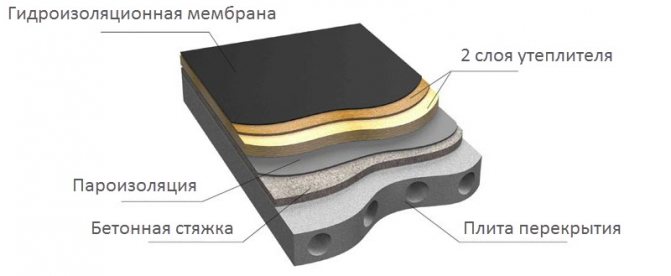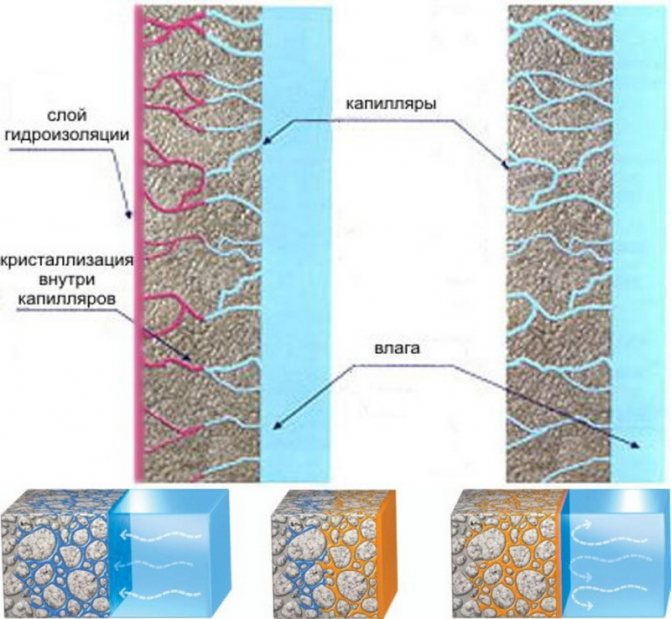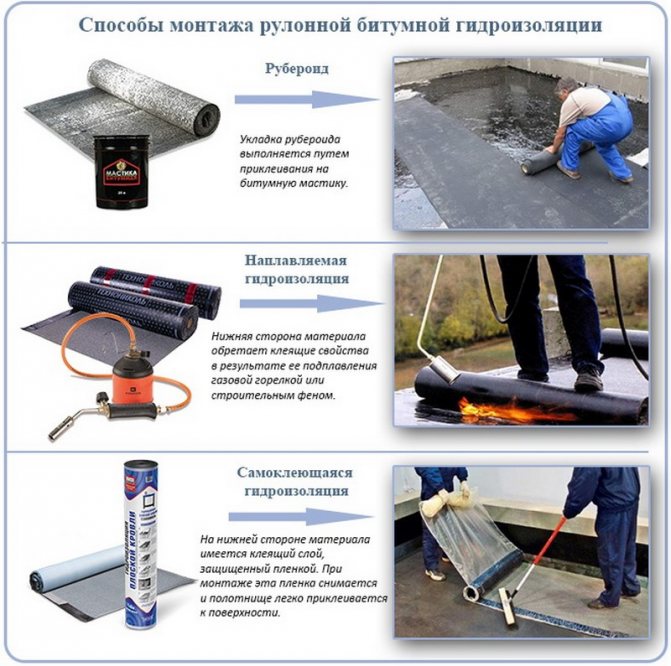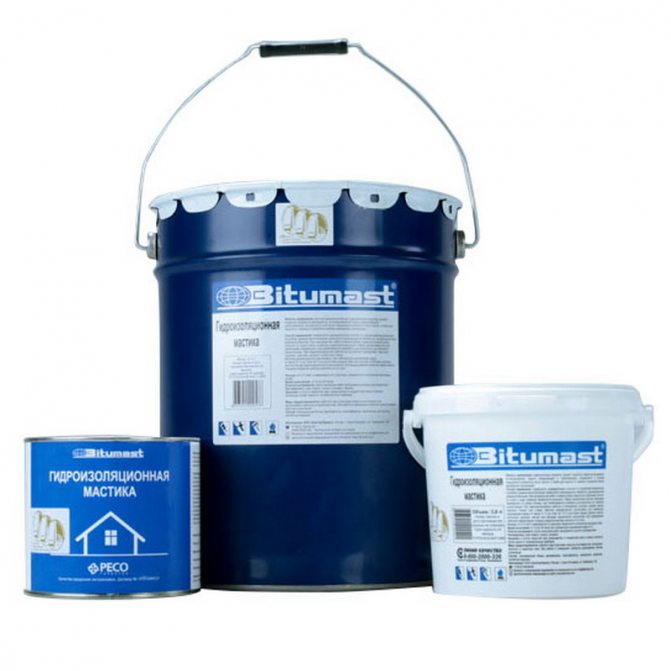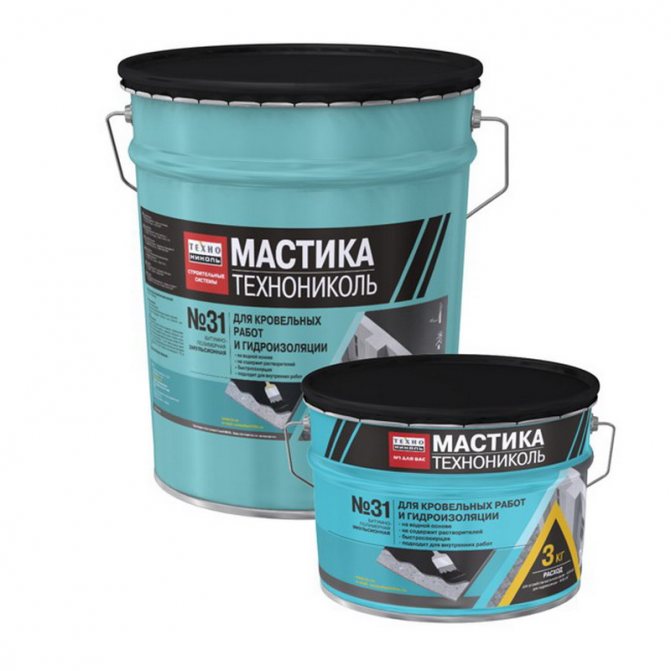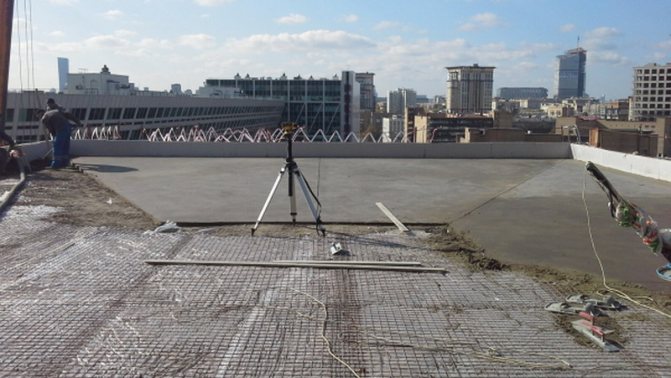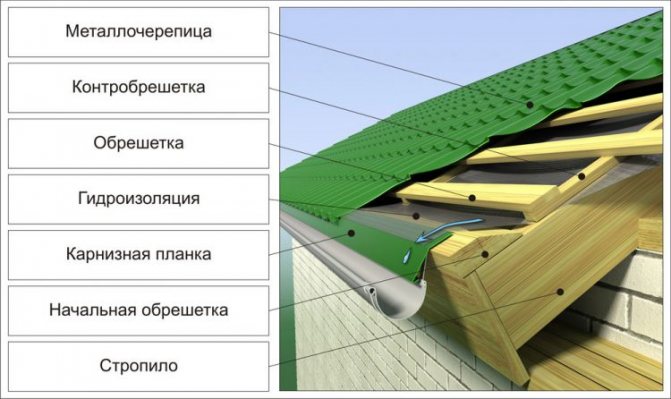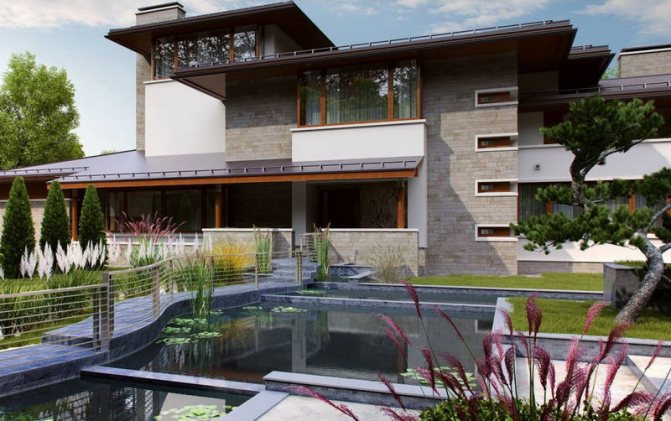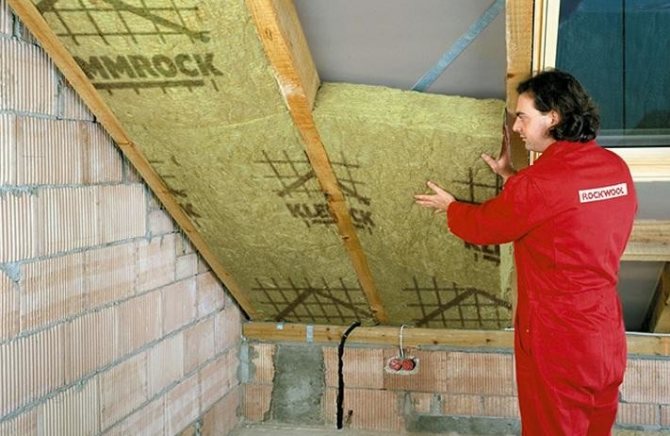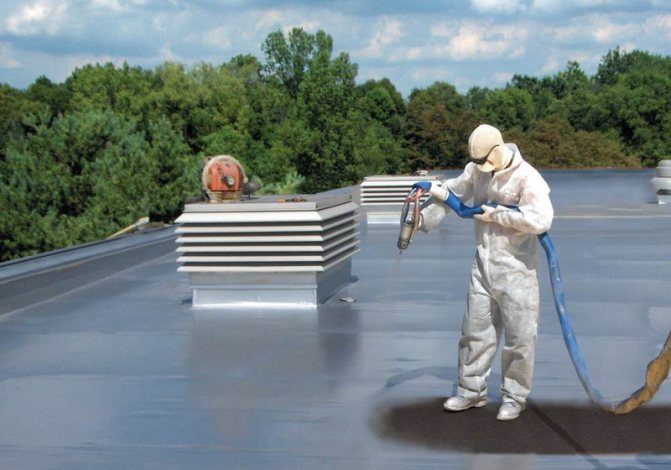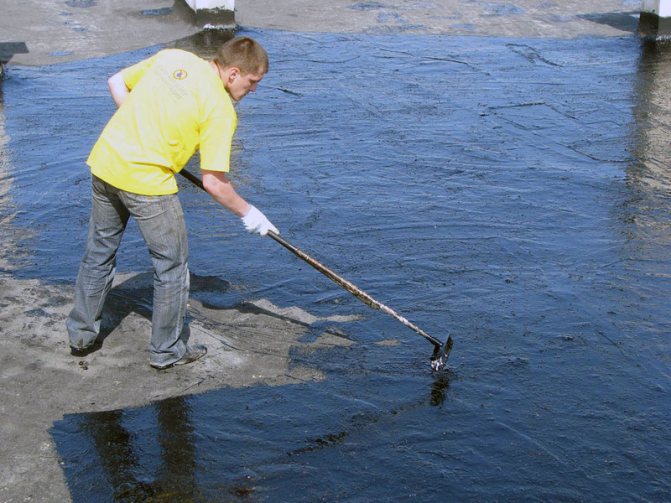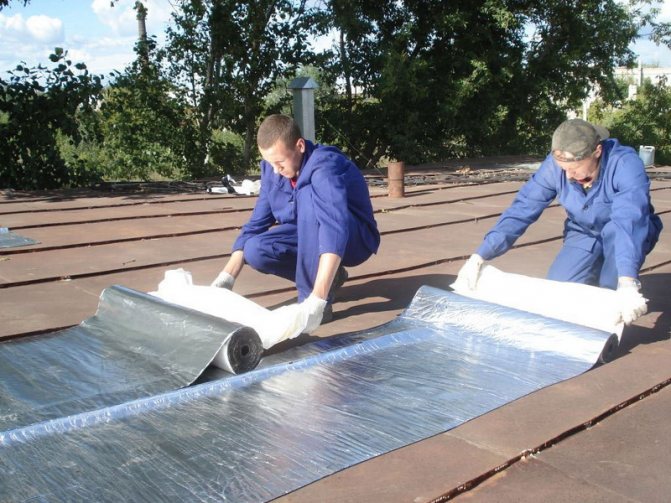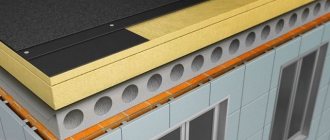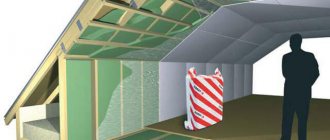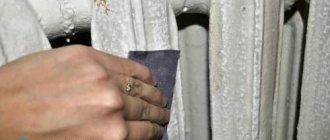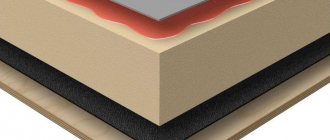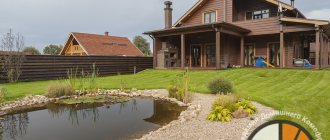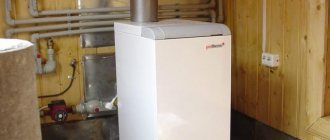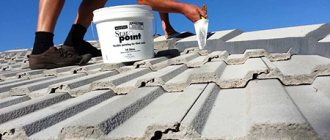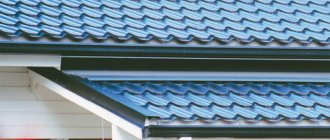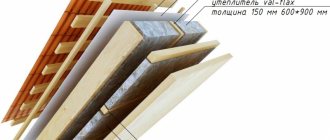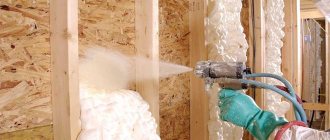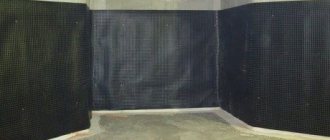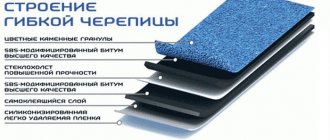Roofing profiled metal sheets are one of the most common roofing materials. The popularity of corrugated board is due to the democratic price, ease of installation, and low weight. However, along with the obvious advantages, this material has no less noticeable disadvantages. One of them is increased condensation. Under certain conditions, heavy dew falls on steel sheets, both outside and inside. Because of this, from time to time a little rain literally drizzles under the roof. Wooden structures and insulation have to be protected from condensation. The authors of some articles posted on the Internet claim that a waterproofing layer should be located under the steel sheets and even allow themselves to give advice on the choice of material. However, in fact, waterproofing under the corrugated board is not needed, and sometimes it is contraindicated.
What materials insulating against moisture are used in construction
It should be understood: by no means all materials designed to protect against moisture are waterproofing.
Waterproofing ↑
It is absolutely waterproof, withstands a fairly large water pressure (continuous flow of water), is very durable and resistant to atmospheric influences, ultraviolet radiation, which allows it to be used in an open state. Waterproofing is suitable for the construction of hydraulic and underground structures, building foundations, flat roofs. Waterproofing materials include bitumen and bitumen-polymer roll insulation, mastics, polymer membranes, special cement-polymer penetrating compounds, bentonite clay slabs.
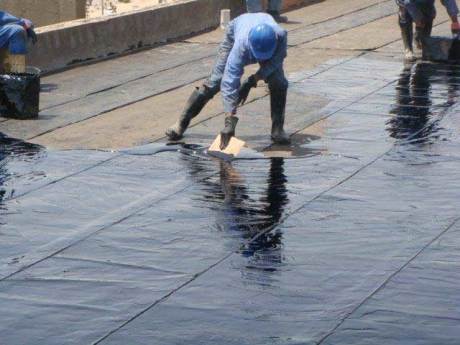
When installing a flat roof, the waterproofing layer can simultaneously serve as a roof covering
Vapor barrier ↑
As the name suggests, it does not allow water vapor to pass through. Roll waterproofing materials and polymer membranes can cope with this task, but they are inconvenient for use in lightweight wall and roof structures. It is much easier to attach thin and lightweight reinforced polyethylene vapor barrier films to the frame. And they are much cheaper. The vapor barrier is also waterproof and able to protect against rain. But it does not have sufficient mechanical strength and resistance to ultraviolet radiation, which does not allow the use of vapor barrier in an open form, but only under the protection of roofing and wall cladding.
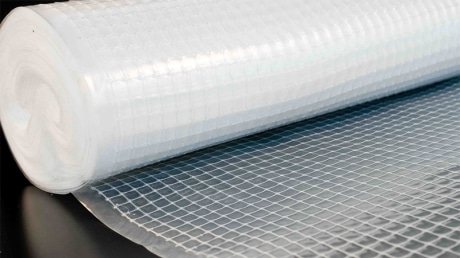

Reinforced polyethylene and polypropylene vapor barrier films are mainly used for roofing. The mounted truss structures in the warm season are allowed to be left uncovered for a couple of months, protected only by a vapor barrier. It will protect the wood from precipitation. But no longer, the resistance of the film to ultraviolet light is limited, it can also not withstand the snow load.
Wind and moisture insulation ↑
Wind and moisture insulation for the roof is able to protect the fibrous insulation from being blown by the wind, to a certain extent retains liquid water, but at the same time freely passes water vapor. Due to such selective properties of moisture transmission, wind and moisture insulating films are also called diffusion membranes. They can be made of polymer fibers (non-woven canvas) or perforated film, there are also combined options.
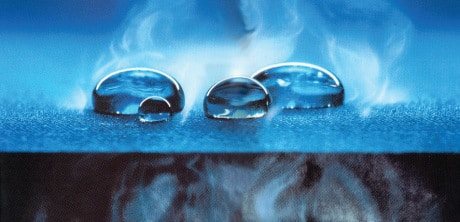

Due to the presence of pores, the diffusion, wind and moisture-proof membrane allows water vapor to pass through.But the size of these pores is so small that water droplets falling on the surface do not penetrate the film. Surface tension prevents this from happening. However, if the membrane is wetted for a long time and abundantly, sooner or later it will get wet, "it will leak." Wind and moisture protection is not suitable as protection against heavy rain; immediately after its installation, the roof should be covered with a roof covering
Installation of waterproofing on flat roofs
Waterproofing of flat roofs, regardless of the type of material selected, is carried out in accordance with SNIPU III-20-74. As always, the first is the preparatory stage, on the correctness of which the quality of all work depends. There are materials that are more demanding on the quality of the preparation of the working surface, while the general points are the same for everyone:
- chipping (if necessary) and sealing the joints of structural elements of the building - gaps between the roof and walls;
- applying a leveling screed with a corner - a slope of 2 cm per 1 running meter. m towards the low tide;
- dust removal;
- laying waterproofing with an overlap on adjacent vertical walls and pipes.
Further, the methods of waterproofing the roof with their own hands differ depending on the materials that are selected taking into account whether the roof will be operated or not.
The coaxial chimney for a gas boiler works simultaneously in two directions: oxygen supply and carbon monoxide outlet.
Detailed instructions on how to make a chimney for a floor-standing gas boiler here.
Hot and cold mastics
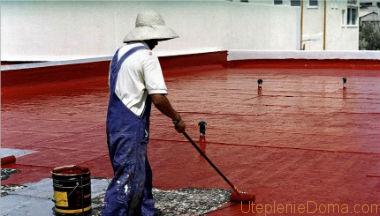

Mastics come in a variety of colors.
Mastics are bituminous and latex based. Bituminous mastics are produced in one-component and two-component, cold and hot application methods. The hot method of application involves heating the material for waterproofing the roof to 300 degrees. Work can only be carried out at outdoor temperatures of 15 degrees and above. The hot compound penetrates deeply into the structure of the material, thereby strengthening it. Cold mastics do not require preliminary preparation before application. Installation of roof waterproofing is possible at low temperatures.
Both compositions are applied to the work surface with a roller or brush. You need at least two coats to achieve a quality result. Bituminous mastics and primers also act as an adhesive layer for laying bituminous tapes. This is such a primer so that the adhesion of the waterproofing and the working surface is better. Latex mastics can also be used for outdoor use, but they are usually used in the middle of rooms, for example, for waterproofing bathroom walls.
Liquid rubber
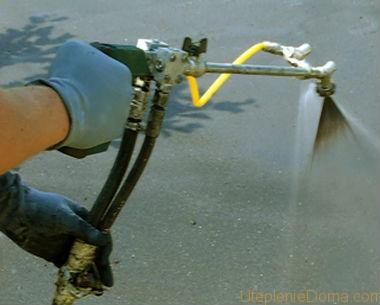

Double-flare spray gun for applying liquid rubber.
When we talked about materials with increased requirements for the preparation of the working surface, we meant liquid rubber. If dust is removed poorly before installation, the material will peel off in a short time. In fact, this material has nothing to do with rubber, it just resembles it in appearance and elasticity after polymerization. In order to cover the roof with liquid rubber, you will need special equipment:
- compressor;
- two-flare sprayer;
- containers for the components of the composition;
- connecting hoses;
- filters, fittings and other accessories.
It is a two-component compound that cures in a matter of seconds, so the components are mixed immediately before being applied to the work surface. For this, a two-torch atomizer is needed, from each nozzle of which the components are supplied separately. Installation is possible only by professionals, since skills are needed to correctly use and configure the equipment.
Bituminous tapes
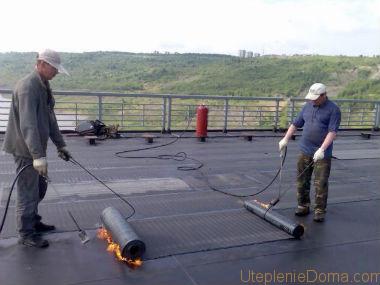

Fusion of bitumen rolls.
Bituminous tapes have one adhesive surface, which heats up before installation.The waterproofing is installed on the roof by the fusion method. The belts are rolled onto the bituminous primed surface by two people. One person unrolls the rolls, and the second one heats the adhesive surface with an open flame and controls the degree of its heating. To make it clear when the tape is ready for gluing, a pattern is applied below. When it disappears, the material is ready. In addition, there are overlap boundaries in the figure. Installation rules:
- make an overlap along the line indicated on the material;
- put the second layer with the joint offset by half the width of the tape;
- iron the joints with a special rubber roller.
Waterproofing should be installed in at least two layers. The tapes for the bottom and top layers are different. Top with sprinkles, it is laid last, even if you need more layers than two.
PVC membranes
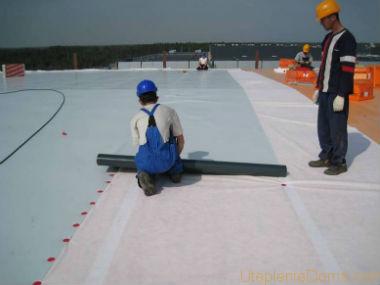

The PVC membrane is light colored to minimize heat from the sun.
PVC membranes are laid in two ways: ballast and mechanical. The ballast method involves rolling out films with an overlap without additional attachment to the roof and soldering the seams. PVC is only attached to the parapet. After laying, the ballast layer is poured, gravel, small crushed stone or pebbles are suitable in this capacity, you can also lay parapet tiles. The mechanical method is more reliable and due to this it has become widespread. How to fix PVC waterproofing on the roof:
- metal corners are installed along the perimeter of the parapet, the outer part of which is covered with PVC;
- membrane strips are rolled out and stretched along the roof;
- at the edges of the tape are attached with plastic fungi or metal dowels, which are drilled into the roof or a layer of insulation;
- the next tape is laid with an overlap so as to overlap the mechanical fasteners with a margin (12 cm);
- the joint is heated and glued (sealed with a rubber roller);
- on the PVC parapet, the tape is soldered to the pre-installed corner.
Manufacturers provide additional elements for waterproofing, such as PVC funnels for pipes and parapet overflows. Joints can be welded manually or using a special machine. Before the main work, you need to test the heating temperature. Connect the two PVC membrane elements and tear them apart after cooling. If the material did not come off at the junction, everything is fine. If the PVC is not heated enough, then the joint will disperse at the junction and there will be no remnants of molten material on the front surface. If the PVC is overheated, then the joint will disperse, and there will be remnants of molten polymer at the junction.
Penetrating waterproofing (impregnation)
Penetrating waterproofing is available in the form of powders that must be diluted with water and a liquid ready to use. Typically, such compositions are used as roof waterproofing from the inside and are suitable only for finely porous materials (mainly concrete).
The essence of such waterproofing is that it penetrates into the structure of the material and crystallizes there. As a result of the reaction, crystals are formed that block the path of moisture, making the concrete waterproof. Application methods:
- roller or brush;
- spray bottle.
Injection-penetrating waterproofing is introduced only into the floor and walls (including brick ones), since it is necessary to make multiple holes, which can weaken the reliability of the floor.
What is a roofing film (membrane) ↑
It is clear: if the film is under-roofing, it means that it is placed directly under the roof covering. One of its main functions is to protect the rafter system and insulation (if any) from condensation, which can abundantly fall out on profiled metal sheets. Any of the above insulation materials will cope with it: hydro (steam) insulation, diffusion membrane (wind insulation). However, these are not all the tasks that the roofing film is designed to solve.What exactly is required of it and how to choose the right under-roofing film (membrane) directly depends on the type of roof. Consider two types of roofs: cold attic and warm attic.
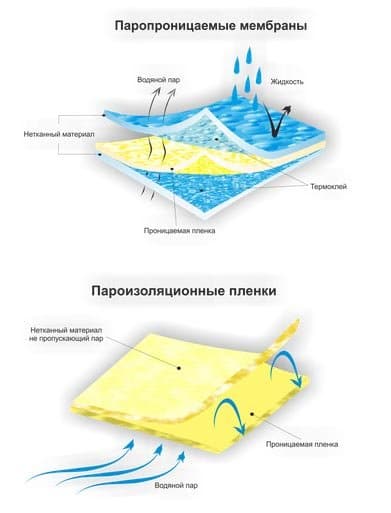

Recently, there has been a tendency to call vapor barrier a roofing film, and wind moisture insulation - a roofing membrane. This is not entirely correct use of the terms, but it just so happened. The main thing is in the difference in the physical properties of these materials.
It is important to know: unfortunately, the Internet is full of confusion on this topic; ignorant sellers of building materials and illiterate builders also contribute. Often, wind and moisture insulation and vapor barrier are called waterproofing. This is wrong, you need to understand that this is not the same thing, materials have different physical properties, they are designed for different types of roofs.
Waterproofing materials
Waterproofing the roof of the house- this is the creation of a layer that prevents the penetration of water and steam into the thickness of the insulation. The materials used for this purpose are either application-curing film formers or sheet membranes or films made off-the-shelf for installation in the desired location.
It should be noted that for waterproofing a pitched roof, the use of liquid binders is not always convenient, especially if strong heating is required (as, for example, when using bitumen). Nevertheless, there are quite a few types of waterproofing materials (we examined them in detail in this article), we will consider some of them.
- Bituminous mastics(welded waterproofing). The material is convenient for old structures, as it does not require thorough cleaning of the surface. Works well on rust, damp or dusty substrates.Cleaning is only necessary if there is a thick layer of dirt, earth, ice, etc. If the coating process is carried out several times in a row, a fairly thick layer can be achieved. The disadvantages include the exactingness of some types to application temperature reaching 160 °, in addition, the application of thick mastic is physically not always convenient in a pitched roof. Also, bituminous mastic is well suited for waterproofing slate roof joints or
Roof above the cold attic ↑
There is no need to insulate the attic roof, but you can ventilate it by arranging holes in the gable walls or filing.
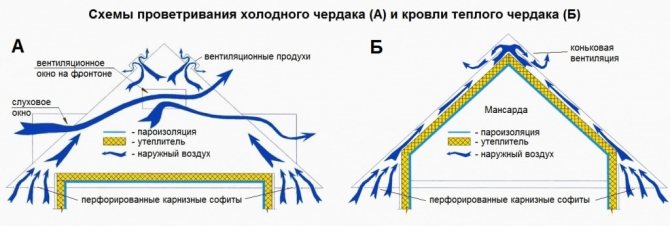

In our case, the fundamental difference between a cold attic and a mansard (combined) roof is how they are ventilated, how excess moisture is removed from wood and insulation
Thus, moisture from the inside of the attic is removed due to good internal ventilation, it is only necessary to protect the structures from condensation that forms on the underside of the roofing. Installation of waterproofing under the corrugated board is possible. Once they did it, they rolled roofing material under corrugated asbestos-cement sheets (slate). Theoretically, you can use old linoleum, sheets of plastic, tin and other unnecessary trash that does not allow water to pass through. However, a special vapor barrier film will last longer, it is easier to fix, it is very inexpensive. You can also use a diffusion membrane, but there is not much sense in this: it will cost more, and its properties of passing water vapor will be unclaimed.
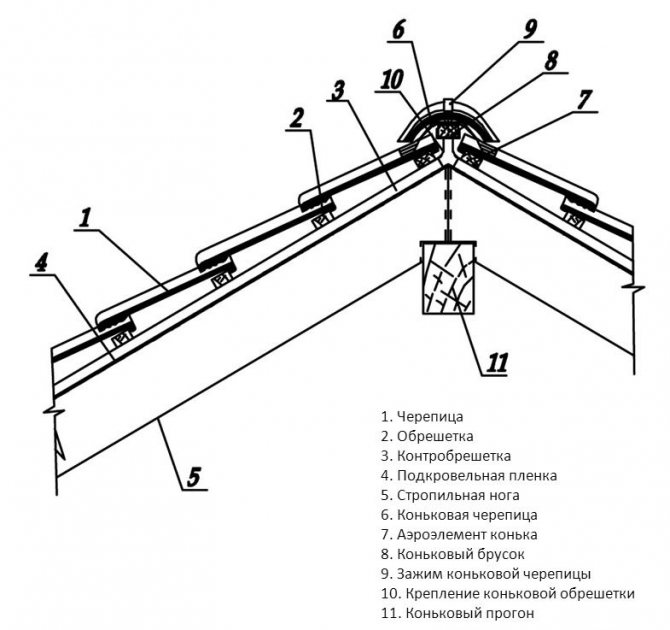

The roof structure of a cold attic should include a vapor barrier film
It is important to know: for a cold attic roof, the best roofing film is a vapor barrier, but any type of moisture-wicking material will do.
HOW TO CHOOSE THE RIGHT MATERIAL FOR ROOF WATERPROOFING
When choosing high-quality waterproofing for metal tiles, they pay attention to certain parameters:
- moisture resistance;
- steam capacity;
- fire resistance;
- strength and elasticity;
- resistance to temperature extremes, ultraviolet radiation, microflora;
- resistance to the development of deformation and mechanical stress.
Also, the material must be environmentally friendly, not emit harmful substances into the environment.
Roof above the warm attic ↑
The mansard roof has to be insulated, and the insulation and wooden structures have the ability to absorb moisture from the air. It will not work to ventilate them from below, from the side of the premises, the air there is more humid than outside. On the contrary, from the inside, the roof must be protected from moisture by covering the rafters with a vapor barrier film. The only way to prevent wood and mineral wool from damp is to ensure their ventilation from the outside, be sure to leave a ventilated air gap with a height of at least 4 cm between the roofing and the under-roofing film.Hydro (steam) insulation will not ensure the release of water vapor, therefore, for mansard roofs, only vapor-permeable wind and moisture insulation is used (diffusion membrane).
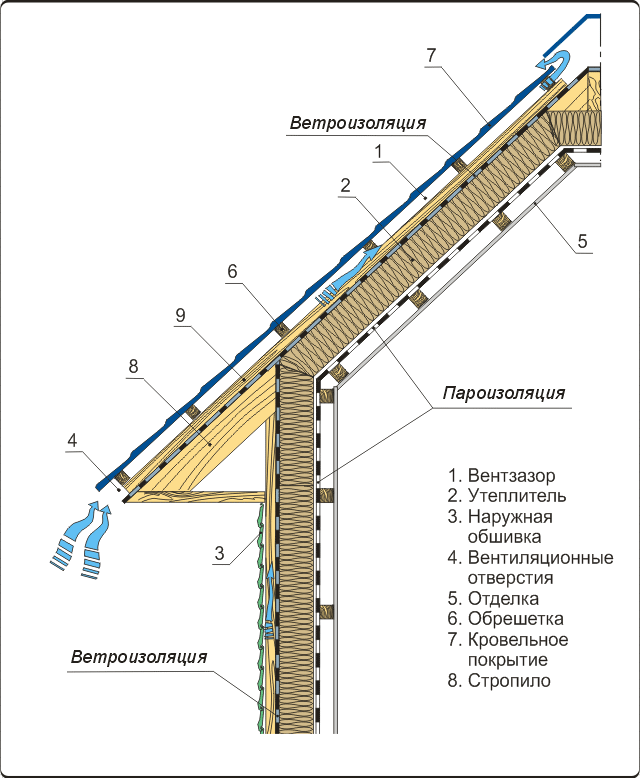

Correct construction of the attic roof and walls of the frame house. From the inside, the structure should be protected by a vapor barrier, from the outside by wind and moisture protection. But not the other way around!
It is important to know: the only suitable option for a roofing film (membrane) for a standard attic roof structure is a diffusion membrane.
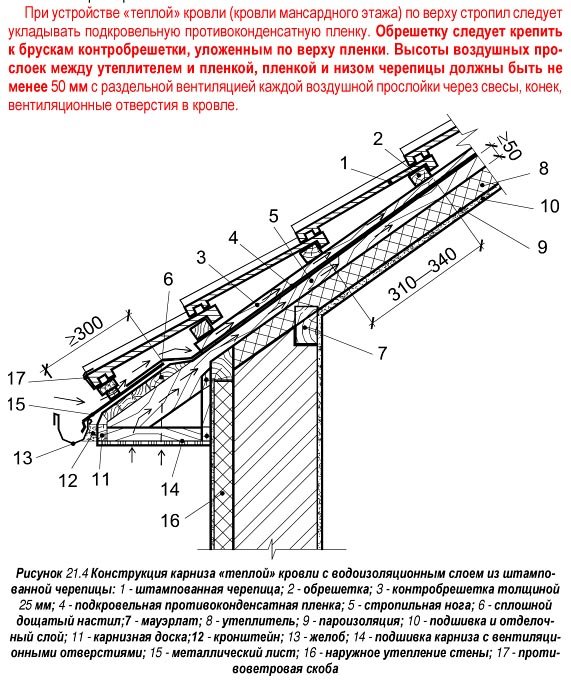

There is a version of the combined (mansard) roof, in which a vapor-proof hydro or vapor barrier is used as a roofing film. But in this case, it is necessary to ensure effective ventilation of the space both above and below the film, the total height of the ventilation gaps will reach 10 cm. This solution is effective, but complicates the design and is rarely used. Please note that the under-roof foil (4), closer to the overhang, is brought out over the steel apron (15), and that into the gutter of the gutter system. This should always be done, this is to ensure that condensate flows out of the roof structure.
In conclusion, let us say that not only the comfort of living in the house, but also the durability of the structure depends on how correctly the roof structure is selected and the materials for its installation are chosen. If you do not have sufficient knowledge in the field of construction, do not have the time or desire to delve into the intricacies of modern technologies, the best solution would be to entrust the execution of important work to experienced professionals.
Types of waterproofing
There are two types of roof waterproofing materials for corrugated board:
- films made of polypropylene or polyethylene;
- membranes.
Polypropylene films have increased vapor barrier properties, in contrast to polyethylene. They are particularly robust and reliable. Polypropylene is resistant to sunlight, temperature extremes. It absorbs and retains moisture well. Polyethylene material for waterproofing is inferior in its endurance to polypropylene. Usually it is additionally reinforced with fiberglass.
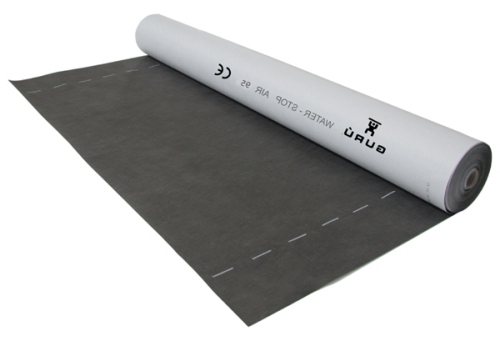

Membrane it is considered a more effective material in the field of waterproofing. Outwardly, it is an elastic thin sheet 1-3 mm thick. Membrane films, in addition to retaining moisture, release water vapor, which is formed due to convection. Due to their specific structure, roofing membrane films effectively resist metal corrosion, almost completely absorb noise and reduce roof leakage to a minimum. They are highly resistant to punctures, impacts and other mechanical influences. The service life of membrane films reaches 50 years. The membranes are absolutely safe for humans and animals.
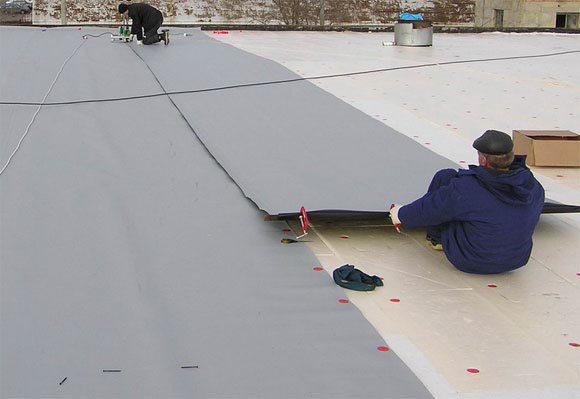

For waterproofing the roof, you can use diffusion and superdiffusion films.
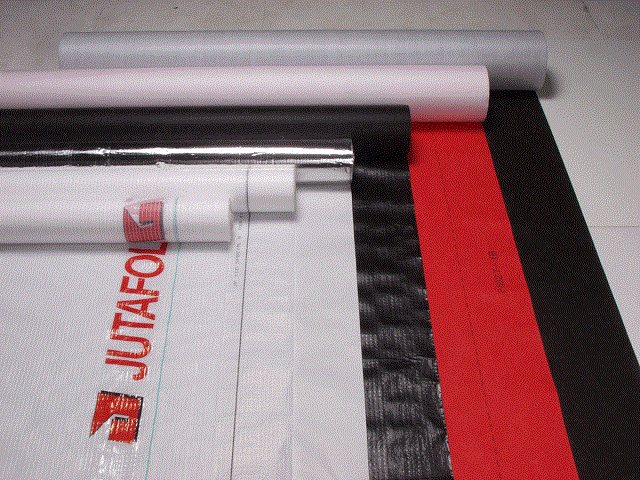

Important!
Protecting the roof and under-roof space from moisture penetration by means of waterproofing films is possible only if the installation of the units is performed correctly. The exception is superdiffusion membranes, they function effectively regardless of the quality of installation work.
How to install
Before proceeding with the direct installation of the waterproofing film, it is necessary to treat the wooden crate with an antiseptic solution. This will protect the lumber from wood rot and fungi. An aqueous solution of a primer will act as an antiseptic. The process of laying a waterproofing layer for the roof is carried out from the bottom and continues to the very top - to the ridge.
Roll the first sheet of film horizontally perpendicular to the rafters. To facilitate the work, the foam will be attached to the rafters using a construction stapler.
Use only galvanized staples. When the sheet has been installed, fix it with a clamping wooden strip. For this, nails are used with a step of 20 cm. This design is called a counter-lattice.
On the video, steam waterproofing films for the roof:
Further actions are reduced to laying the next sheet. This is done with an overlap on the first. The overlap can be 150 or 250 mm. If the roof has a slope of less than 30 degrees, then the overlap will be more than 150 mm. The roof ridge will be located directly in the center of the waterproofing sheet to be installed.
Above the counter-lattice, a frame made of timber, the height of which is not less than 20-25 mm, will be fixed. This gap between the roofing material and the waterproofing is important for ventilation. The rails are fastened to the rafters with nails with a pitch of 350 mm.

